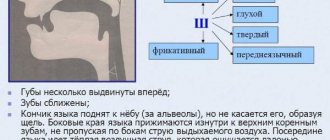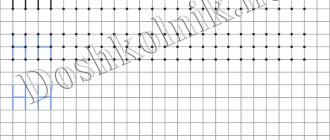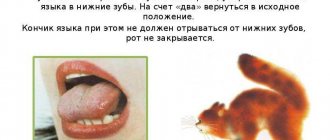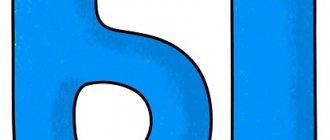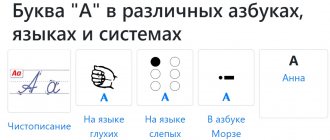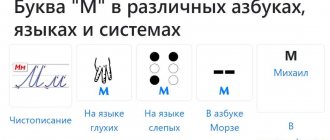Readers of our regular phonetic column have more than once asked in the comments to understand the interdental sound th. This is not at all surprising: th is one of the most frequently encountered sounds in the English language, while in Russian (and in many others) this sound simply does not exist.
How to pronounce it? How to fix common mistakes? How to “train your mouth” to pronounce correctly? Today we will answer these questions using videos, exercises, tongue twisters, words and examples from songs.
What sound do the letters th make?
Just let’s make it clear right away that th is not a sound. This is a combination of letters that can be read as two sounds: voiceless / θ /, as in the word thanks,
and voiced /ð/, as in
that.
It is with these signs that the interdental “th sounds” are indicated in transcription. But in the article I will sometimes write “th sound” for convenience.
Both sounds, voiced and unvoiced, are articulated in the same way (lips and tongue are in the same position). Therefore, we will structure the work as follows:
- First, let's learn the correct mouth position for both sounds;
- Then we will analyze possible errors and find out how to correct them;
- Then we will work on tongue twisters and words, each sound separately.
Pronunciation of the th sound in English
Yes, we don't have these sounds. But we have the concept of “lisp.” Do you remember Sid the sloth from Ice Age: “No, I f
Is
anyone
young
enough
to die!” In the English dictionary, the word “lisp” (lisp) is interpreted as “a speech defect in which s and z sound like th in think and this, respectively.”
This video talks about lisps. I recommend watching: simple and humorous.
That is, it turns out that we need to pronounce Russian / s / with a lisp for the deaf / θ / and Russian / z / for the voiced / ð /. What do you mean, “lisp”? Say the word “composition” right now. When pronouncing the /c/ sound, your tongue is BEHIND your teeth. Now place your tongue between your teeth (the th sound is interdental) and say “composition” again. You will end up with something like a deaf th, as in the word thick.
Now do the same, but with the word “gap”. As a result, you will get something similar to a voiced th, as in the word then.
Why do I say “similarity”? Because Russian /s – z/ are not identical to English /s – z/, which means their lisp will be slightly different. Therefore, let’s take a closer look at the position of the articulatory apparatus.
Bonus: interesting facts about the English language
English lexemes formed by combining two nouns are called mixed (in grammar textbooks they are called blend). Blending remains a common way to expand your English vocabulary. Thanks to him, the concepts of brunch (brunch, a hybrid of the words breakfast and lunch - breakfast and lunch) and motel (motel, a hybrid of the words motorcar and hotel - a passenger car and hotel) appeared in the oral and written speech of the British. Linguists distinguish mixed lexemes and compound nouns: website, blackboard, darkroom (website, blackboard, dark room for photo development).
The letter e is used more often than others in English. An analysis of two hundred and forty thousand entries in the Concise Oxford Dictionary showed that e occurs in 11% of lexemes (more than 26 thousand units). This result exceeded the results of a, the second most frequently used letter in the English alphabet, by 6,000 words. The letter e also holds another record. This symbol is most often used when typing text on computer keyboards (in terms of frequency of use, e is surpassed only by the space). The e sign appears in the most common English word, the, the most common noun, time, the most common verb, to be, and most pronouns, he, she, me, we. Don't forget about the thousands of words ending with the postfixes -ed and -es. The most common consonant in the English language is r, with t in second place.
The letter combination –ough can be pronounced in ten different ways. For a long time, English spelling developed inconsistently. The result of this were rules for the pronunciation of vowel and consonant phonemes with a large number of exceptions. Numerous borrowings of lexemes from other languages also contributed to the complication of British phonetics. As a result, the pronunciation of words containing the letter combination –ough has evolved differently. The phrase “A rough-coated, dough-faced, thoughtful ploughman strode through the streets of Scarborough; after falling into a slough, he coughed and hiccoughed" includes all possible pronunciations of –ough.
The word run has a record-breaking list of meanings. Linguists tried to find the lexeme with the largest number of definitions in the first edition of the Oxford Dictionary (1928). The word run had 430 interpretations, the explanation of which consisted of sixty thousand words, located on twenty-four pages. Over time, the primacy among polysemantic lexemes passed to put. But over the past decade, run has been able to return to first place in the rankings. Linguists believe that this happened due to technological progress - dozens of new expressions with the word run appeared in the spoken and written speech of native speakers (an iPad runs apps and similar ones).
How to pronounce th sound in English
Tongue spread out
and tense, and its tip is located between the upper and lower teeth, forming a narrow flat gap between
the cutting edge of the upper teeth
and the surface of the anterior edge of the tongue.
To learn the ideal positioning of the articulatory apparatus, I suggest you watch the video. It shows three life hacks:
2:08 – how to put the articulatory apparatus in the ideal position: open your mouth, place your tongue on top of your lower teeth so that the tip is directly behind the lower lip and slowly lower your upper teeth onto your tongue – try to pronounce the voiceless version of th, as in think
.
2:52 - how to feel the necessary tension on the tongue: take a straw and place it between the tongue and the upper teeth - this way you will feel how strong the tension should be on the tongue.
3:36 – how far to stick your tongue forward: place your finger perpendicular to your lips (as when we ask you to be quieter) and stick your tongue out. The tongue should lightly touch the finger - this is the limit.
And don’t forget to repeat sentences and words after the presenter! This sound takes practice and more practice.
Pronunciation of the interdental sound th: video.
Pronunciation of phonemes formed by the digraph th
The articulation of voiced and unvoiced sounds is performed according to a single algorithm. The voiceless [θ] resembles the Russian sound [s], pronounced with a hiss (or with a slight dyslalia - lisp). The voiced [ð] is similar to the Russian sound [z], which should be reproduced with a similar [s] dislalia. This is relatively simple to do: when pronouncing Russian-language lexemes, the speaker’s tongue is located behind the teeth. English words are pronounced by placing the tongue between the upper and lower rows of teeth. That is why the th sound is called interdental.
How to ensure correct tongue placement when pronouncing the th sound? Use the following algorithm:
- Place your tongue in a horizontal plane and tense it. Its tip should be placed between the upper and lower pair of incisors.
- Make sure there is a small gap between the edge of the upper incisors and the surface of the tongue.
- At the moment of playing the phonemes [θ] and [ð], pass the air coming out of the mouth into the gap formed.
After training, you will get a sound that is vaguely similar to the standard English th sound. It is difficult to achieve the correct pronunciation of the phonemes formed by this digraph. The table shows two BBC videos produced as part of the Learning English project. Both videos were created more than ten years ago, but have not lost their relevance today. Short materials are devoted to the correct pronunciation of the th sound combination.
| Phoneme | Training video |
| Voiceless [θ] | |
| Voiced [ð] |
Practice correct pronunciation of the phonemes [θ] and [ð] daily. Over time, you will be able to give each sound its true sound without constantly monitoring the position of your tongue.
How to pronounce th sound in Russian
Now that you have figured out what position the articulatory apparatus should be in, let’s laugh together at the typical mistakes of Russian speakers in order to avoid them in practice (which, by the way, will come immediately after this point).
| Possible mistakes: | How to fix: |
| Replacing the voiceless / θ / with / s / (think we pronounce “sync”); Replacing the voiced /ð/ with / з/ (then is pronounced like “zen”). | Do not arch the front back of your tongue upward. + The tip of the tongue should be between the teeth, and not at the base of the lower front teeth (and not at the alveoli, as for English sz). Do exercises on contrasting words, for example: mouth /maʊθ/ – mouse /maʊs/, thing /θɪŋ/ – sing /sɪŋ/, with /wɪð/ – whizz /wɪz/. |
| Replacing the voiceless /θ/ with /f/ (three is pronounced as “free”); Replacing the voiced /ð/ with / in / (breathe is pronounced like “brieve”). | Expose your teeth, especially the lower ones, as when brushing them, so that the lower lip does not come into contact with the upper teeth or come close to them. Report contrasting pairs: three /θriː/ – free /friː/, thought /θɔːt/ – fought /fɔːt/. |
| Replacing the voiceless / θ / with the sound / t / (thick is pronounced like “tick”); Replacing the voiced /ð/ with /d/ (pronounce this as “diz”). | Do not press the front part of the tongue against the upper teeth: it is lowered down, and the tip is between the teeth. Do exercises on contrasting words, for example: thick /θɪk/ – tick /tɪk/. |
| Deafening of the voiced version th / ð / ⇒ replacement with the voiceless version / θ / at the end of the word. It can happen out of habit, because in Russian, voiced consonants at the end of a word are pronounced dull. | Remember that in English, voiced sounds at the end of a word are not deafened! Do exercises on contrasting words, for example: teeth /tiːθ/ – teethe /tiːð/. |
See, it's not all that complicated.
